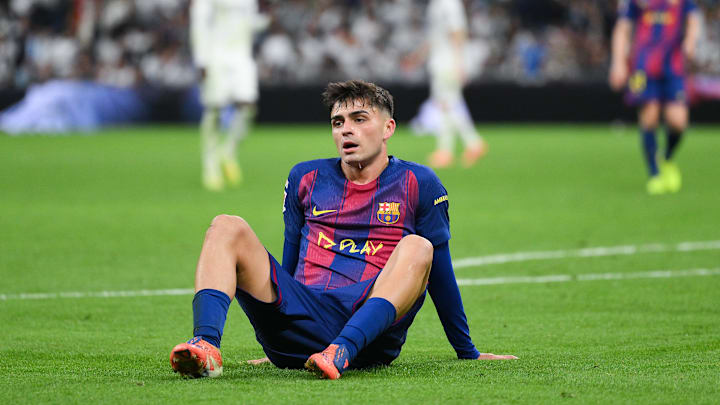Barcelona's hopes of defending their domestic honours and making a deeper run in the Champions League have hit a major stumbling block this season due to a relentless wave of injuries, particularly afflicting the midfield and attacking cores.
The mounting injury tally was compounded by the news that star midfielder Pedri is now confirmed to be out for six to eight weeks after sustaining a torn hamstring. His absence over a crucial period of the season is just one more entry in a season-long catalogue of physical problems, which have included knee and back surgeries, as well as a frustrating number of further hamstring issues plaguing their key players.
Barcelona is currently navigating a period of severe attrition, a high-demand scenario that routinely forces clubs to dip deep into their squad, including promoting talent from La Masia.
However, simply calling this 'bad luck' ignores a critical distinction from the previous campaign. This season, a key question has emerged: Are these injuries the result of standard footballing misfortune, or are they a consequence of one factor?
Registration issues forcing the lack of rotation
While being unable to comment on the inner workings within the club, Hansi Flick has been unable to rotate as much as he would have liked for this season. Losing Inigo Martinez and a number of La Masia graduates has further restricted the squad size as Barcelona risked the chance of registering more players within the 1:1 rule to bring in reinforcements.
That never happened and has been told. Barcelona have already sustained 13 injuries to their squad this season, representing half of all the injuries the team suffered last season, 26. Barcelona's current injury crisis is not a simple case of bad luck but a vicious cycle born from squad limitations that make proper player rotation impossible. Even the loss of just one or two key players immediately exposes the team's fragility.
The intense, non-stop workload of consecutive games and intense pressing leads to a build-up of accumulated fatigue, especially in players who are already recovering from previous muscle issues or are being asked to play significantly more minutes than their body can handle, as in the case of a returning Fermin Lopez, Lamine Yamal and Ferran Torres. Even contemplating Raphinha for El Clasico could be seen as a massive risk for further injuries.
This continuous physical stress then leads to the inevitable, more muscular injuries like the hamstrings and calf problems that have repeatedly decimated the midfield and forward lines, turning a short-term issue into a major, systemic crisis.
The primary structural cause of this non-rotation is the restrictive financial framework the club operates under. Due to the tight constraints of La Liga's Financial Fair Play (FFP) regulations, Barcelona has been severely limited in its ability to sign and register suitable, first-team-calibre reinforcements. Where rival elite clubs can acquire experienced depth to seamlessly cover three competitions, Barcelona is often restricted to searching for cheap deals, loan moves, or promoting talent from the La Masia academy.
While this has been a silver lining for young players like Lamine Yamal and Fermín López, it places an immense burden on them, as they are thrust into high-pressure starting roles without the gradual acclimatization that would protect their developing bodies.
The expectation to win every game remains, but a more deliberate approach to squad rotation could help Hansi Flick in the short term as the club awaits reinforcements in the January transfer window.
